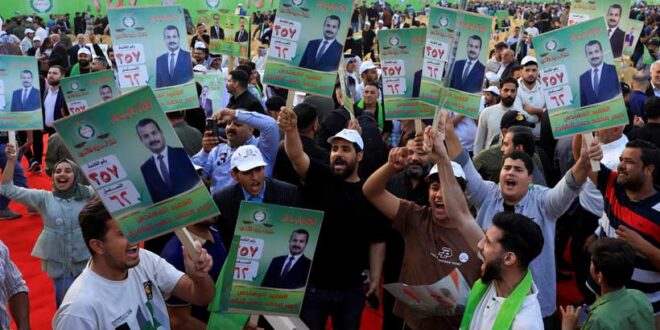Iraqis will vote for a new parliament on November 11, which is important for Prime Minister Mohammed Shia al-Sudani and reflects the views of the young population that sees the political system as benefiting only those in power. Many voters feel disillusioned with democracy in Iraq, believing it has resulted in corruption, unemployment, and inadequate public services, while political groups divide the country’s oil wealth and favor their supporters.
Voting in Iraq began in 2005 after the U. S. invasion in 2003, which removed dictator Saddam Hussein. Early elections experienced violence and a boycott by Sunni Muslims, while the majority Shi’ites gained political control after years of oppression. Although sectarianism has decreased among younger Iraqis, it remains a part of the political system that allocates government positions based on ethnic and religious affiliations. About 40% of the candidates are under 40, indicating a push by younger citizens to challenge established power networks.
Al-Sudani, who took office in 2022 and seeks re-election, leads the Reconstruction and Development Coalition focused on improving services, fighting corruption, and strengthening state authority. His administration has been notable for instigating reconstruction and maintaining good relations with both Iran and the U. S. The State of Law Coalition, led by former prime minister Nouri al-Maliki, competes with al-Sudani’s faction, amidst various parties aligned with Iran that are running separately.
The Sunni political influence comes from Mohammed al-Halbousi’s Taqaddum Party, which aims to empower Sunnis post-conflict. Kurdish parties like the Kurdistan Democratic Party (KDP) and the Patriotic Union of Kurdistan (PUK) have their own goals concerning oil revenue and relations with Baghdad. Moqtada al-Sadr’s movement is boycotting the election, citing corruption, which allows other groups a clearer path.
Voter turnout will indicate the public’s trust in the political system amidst ongoing frustrations. A low turnout could show continued disillusionment, while a higher turnout might give young reform-minded candidates some influence. The next government will face pressure to make significant improvements and manage the balance of U. S. and Iranian influences while dealing with armed groups loyal to Tehran. Preliminary election results will be available shortly after the vote, but forming a government could take months.
 Geostrategic Media Political Commentary, Analysis, Security, Defense
Geostrategic Media Political Commentary, Analysis, Security, Defense





